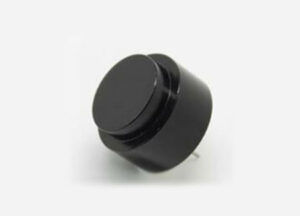40KHz Waterproof Ultrasonic Distance Sensor
Open Structure Ultrasonic Sensor TA0040162T-R Technical parameters:
| Model | TA0040162T | TA0040162R | TA0040162 |
|---|---|---|---|
| Center resonant frequency(kHz) | 40KHZ ± 1.0Khz | 40KHZ ± 1.0Khz | 40KHZ ± 1.0Khz |
| Function | Transmitter | Receiver | Transmitter&Receiver |
| Construction | Water proof type | Water proof type | Water proof type |
| Sound pressure level | 104dB min | / | 104dB min |
| Sensitivity | / | -73dBmin | -73dBmin |
| Angle of major lobe | 60° | 60° | 60° |
| Directivity | 40° (-6dB) | 40° (-6dB) | 40° (-6dB) |
| Electrostatic capacity | 1800Pf± 20% | 1800Pf± 20% | 1800Pf± 20% |
| Maximum operating voltage (Pulse Duty cycle ratio 2%) | 160Vp-p | 160Vp-p | 160Vp-p |
| Operating temperature | -20 ~70℃ | -20 ~70℃ | -20 ~70℃ |
| Storage temperature | -40 ~80℃ | -40 ~80℃ | -40 ~80℃ |
| Size (diameter * height, mm) | Φ16×10 | Φ16×10 | Φ16×10 |
| Case Material | Aluminum | Aluminum | Aluminum |
| Connection | 2pin | 2pin | 2pin |
Environmental Characteristics
Open Structure Ultrasonic Sensor TA0040162T-R
1) MOISTURE
Keep the sensor at 40° C± 2° C and 90° C to 95° C R.H for 96± 4 hours. Then,
release the sensor into the room conditions for 24 hour prior to the measurement.
It shall fulfill the specifications in Table 1.
2) VIBRATION
Subject the sensor to the vibration for 1 hour each in the X.Y and Z axes with the
amplitude of 1.5mm at 10 to 55 Hz. It shall fulfill the specifications in Table 1.
3) HIGH TEMPERATURE EXPOSURE
Subject the sensor to 80± 5° C for 24± 1 hours. then, release the sensor into the
room conditions for 1 hour prior to the measurement. It shall meet the
specifications in Table 1.
4) LOW TEMPERATURE EXPOSURE
Subject the sensor to -30± 5° C for 24± 1 hours. Then release the sensor into the
room conditions for 1 hour prior to the measurement. It shall meet the
specifications in Table 1.
| ITEM | SPECIFICATION |
| Center Frequency | Within 0.5KHz |
| Sound Pressure Level | Within 3dB |
| Sensitivity | Within 3dB |
※ NOTES
– This sensor is designed for use in air. Do not use this sensor in fluid.
– To prevent sensor malfunctions, operational failure or any deterioration of its
characteristics, do not use this sensor in the following, or similar conditions.
A.In strong shock or vibration.
B.In high temperature and humidity for a long time.
C.In corrosive gases or sea breeze.
D.In an atmosphere of organic solvents.
E. In dirty and dusty environments that may contaminate the sensor front.


